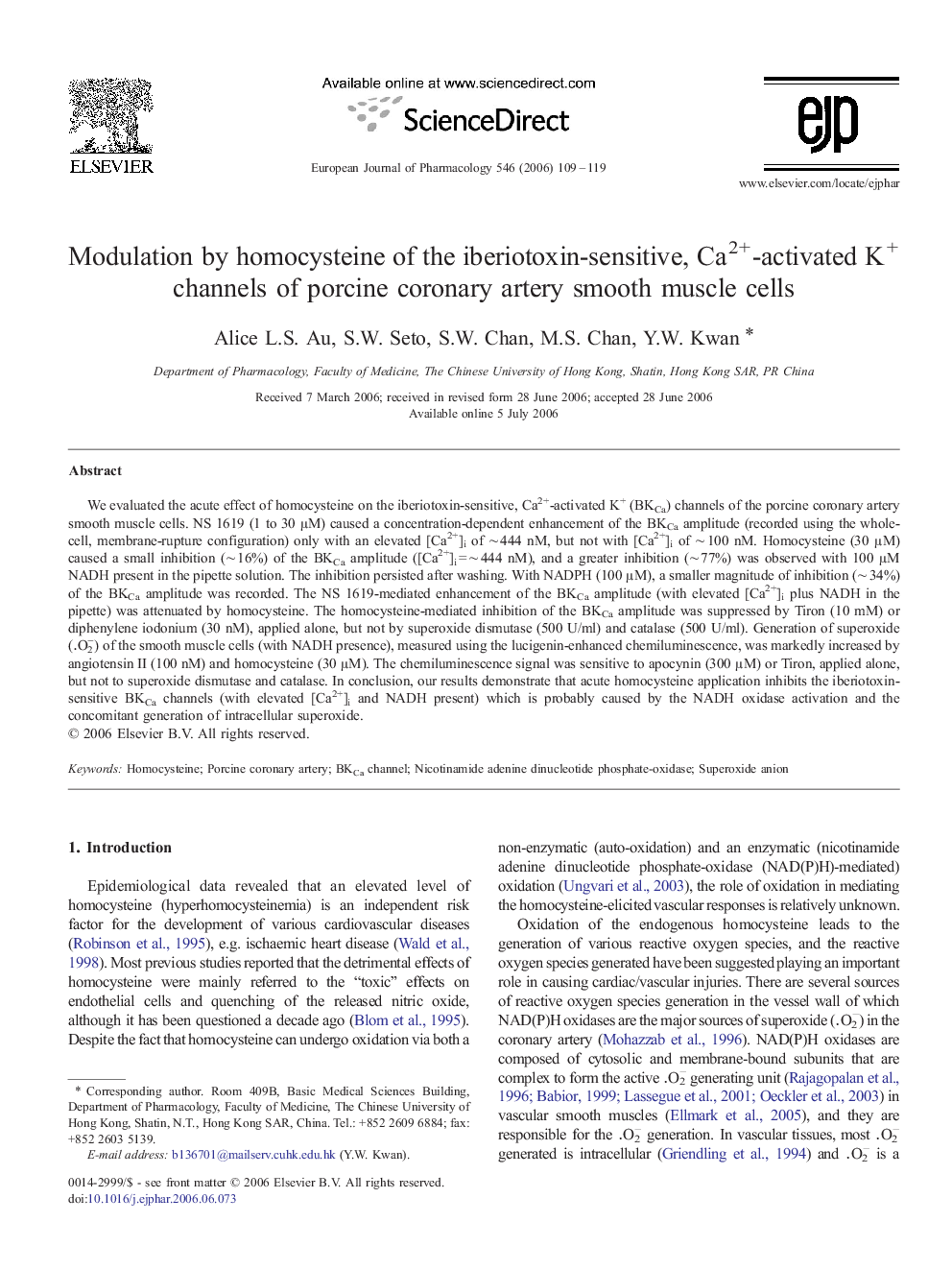| کد مقاله | کد نشریه | سال انتشار | مقاله انگلیسی | نسخه تمام متن |
|---|---|---|---|---|
| 2536953 | 1559169 | 2006 | 11 صفحه PDF | دانلود رایگان |

We evaluated the acute effect of homocysteine on the iberiotoxin-sensitive, Ca2+-activated K+ (BKCa) channels of the porcine coronary artery smooth muscle cells. NS 1619 (1 to 30 μM) caused a concentration-dependent enhancement of the BKCa amplitude (recorded using the whole-cell, membrane-rupture configuration) only with an elevated [Ca2+]i of ∼ 444 nM, but not with [Ca2+]i of ∼ 100 nM. Homocysteine (30 μM) caused a small inhibition (∼ 16%) of the BKCa amplitude ([Ca2+]i = ∼ 444 nM), and a greater inhibition (∼ 77%) was observed with 100 μM NADH present in the pipette solution. The inhibition persisted after washing. With NADPH (100 μM), a smaller magnitude of inhibition (∼ 34%) of the BKCa amplitude was recorded. The NS 1619-mediated enhancement of the BKCa amplitude (with elevated [Ca2+]i plus NADH in the pipette) was attenuated by homocysteine. The homocysteine-mediated inhibition of the BKCa amplitude was suppressed by Tiron (10 mM) or diphenylene iodonium (30 nM), applied alone, but not by superoxide dismutase (500 U/ml) and catalase (500 U/ml). Generation of superoxide (O2−) of the smooth muscle cells (with NADH presence), measured using the lucigenin-enhanced chemiluminescence, was markedly increased by angiotensin II (100 nM) and homocysteine (30 μM). The chemiluminescence signal was sensitive to apocynin (300 μM) or Tiron, applied alone, but not to superoxide dismutase and catalase. In conclusion, our results demonstrate that acute homocysteine application inhibits the iberiotoxin-sensitive BKCa channels (with elevated [Ca2+]i and NADH present) which is probably caused by the NADH oxidase activation and the concomitant generation of intracellular superoxide.
Journal: European Journal of Pharmacology - Volume 546, Issues 1–3, 28 September 2006, Pages 109–119